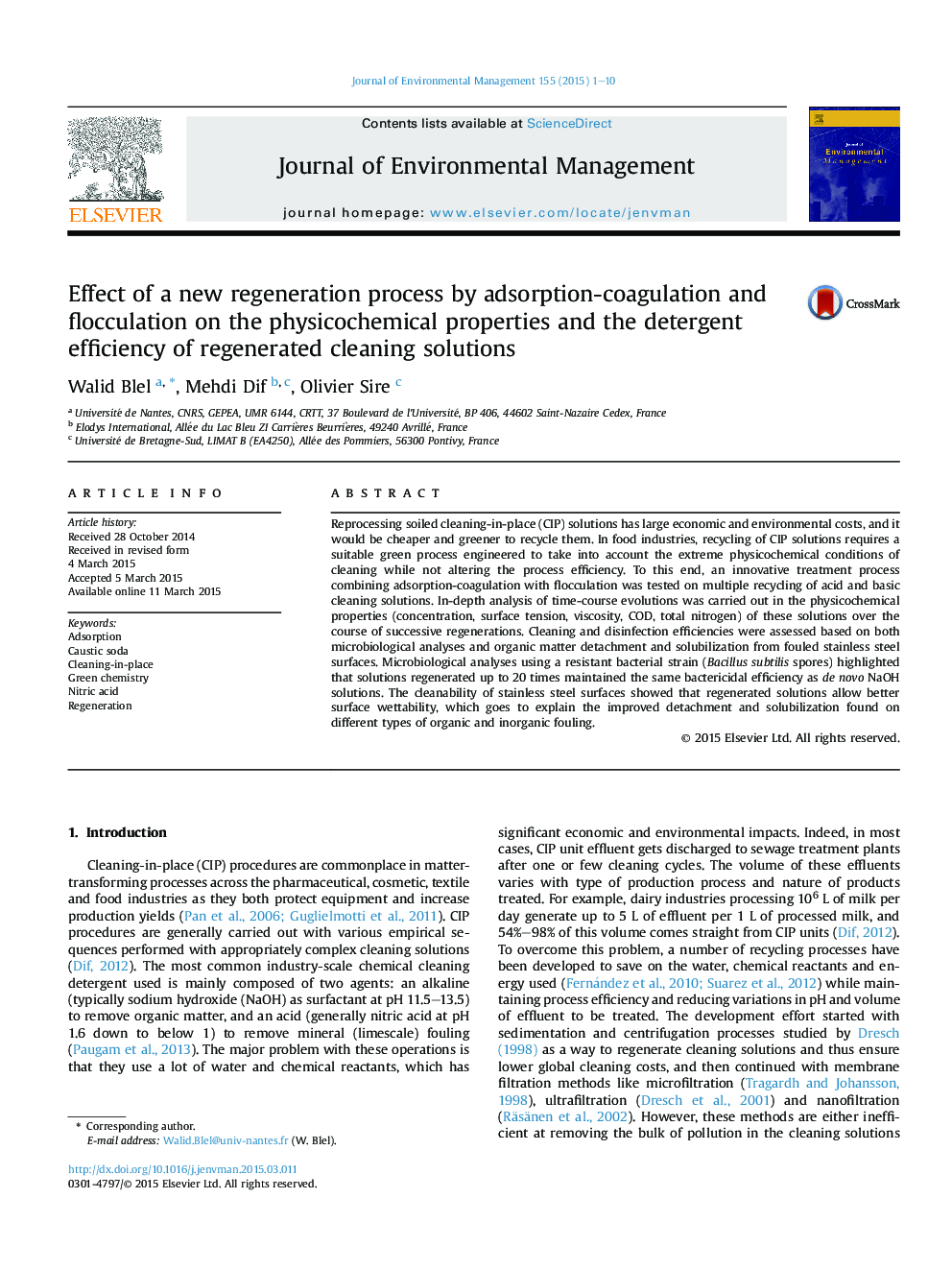| کد مقاله | کد نشریه | سال انتشار | مقاله انگلیسی | نسخه تمام متن |
|---|---|---|---|---|
| 1055592 | 1485257 | 2015 | 10 صفحه PDF | دانلود رایگان |
• An innovative treatment was tested for multiple regenerations of cleaning solutions.
• The Na-bentonite purification is induced by adsorbing and sweeping of the pollution.
• The soluble organic matter is converted to surfactant compounds over regenerations.
• The decrease in surface tension improves the solubilization of detached matter.
• An improvement in the disinfection efficiencies of CIP solutions is then observed.
Reprocessing soiled cleaning-in-place (CIP) solutions has large economic and environmental costs, and it would be cheaper and greener to recycle them. In food industries, recycling of CIP solutions requires a suitable green process engineered to take into account the extreme physicochemical conditions of cleaning while not altering the process efficiency. To this end, an innovative treatment process combining adsorption-coagulation with flocculation was tested on multiple recycling of acid and basic cleaning solutions. In-depth analysis of time-course evolutions was carried out in the physicochemical properties (concentration, surface tension, viscosity, COD, total nitrogen) of these solutions over the course of successive regenerations. Cleaning and disinfection efficiencies were assessed based on both microbiological analyses and organic matter detachment and solubilization from fouled stainless steel surfaces. Microbiological analyses using a resistant bacterial strain (Bacillus subtilis spores) highlighted that solutions regenerated up to 20 times maintained the same bactericidal efficiency as de novo NaOH solutions. The cleanability of stainless steel surfaces showed that regenerated solutions allow better surface wettability, which goes to explain the improved detachment and solubilization found on different types of organic and inorganic fouling.
Journal: Journal of Environmental Management - Volume 155, 15 May 2015, Pages 1–10
